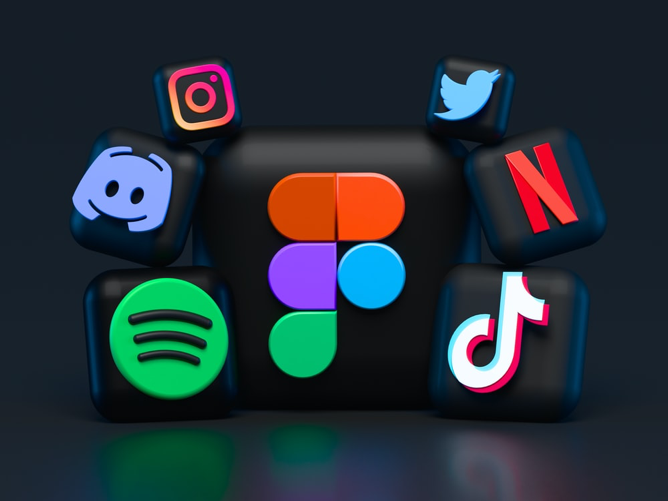The Evolution of Social Media - From Connecting People to an Indispensable Marketing Tool
In its basic form, social media was developed to make it easier and simpler for people to socialize. Take a look at the history behind the inception of Facebook, and you will understand what we mean. However, over the years, that same medium has evolved to allow brands and businesses to reach out to their consumers, existing or potential.
Today, all successful brands have a social media presence, which they use to promote and market their offerings. A study suggests that on average, a social media user spends nearly two and a half hours per day browsing different social media platforms. And the number rises significantly for the younger age demographic.
That is because, with the rise of influencer marketing, many of these influencers are using their online communities of hundreds of thousands to millions of followers to market different brands. Instagram, Facebook, and Tik Tok are some of the most popular of these social media platforms, and you can find many brands being marketed via them every day.
So, without further ado, let’s discover how social media went from connecting people to becoming an essential marketing tool nowadays.
Social Media and Its Inception
With the internet becoming more popular and common around the world in the late 90s and early 2000s, people started using it more and more to socialize with an expanded group of friends and acquaintances. In the early days, email was the go-to mode of online communication. But soon, messenger apps like Yahoo messenger, AOL messenger, and MSN messenger dropped onto the scene and changed the game.
These apps allowed for better P2P communication, making for a more immersive, better chat experience. But they had one limitation – they required that you needed a valid email address in order to connect with that specific user. Plus, different messenger apps required that a user and everyone they connect with have a valid email address from the app’s proprietary platform, meaning that in order to use Yahoo messenger, all participants needed to have a Yahoo email address.
The need to connect with new people is what drove the early entrepreneurs to design and build a true social media network, where people could look up and connect with new acquaintances or even complete strangers, just like in the real world.
The Rise of Modern Social Media Platforms – The Early 2000s
Myspace was a groundbreaking revolution when it was revealed. As the first social media, it was a platform that was quite different from what we are used to today. Users could customize their own social media page, complete with background music, custom graphics, and sound effects. However, it was still somewhat limited. Google’s Orkut too tried to make its mark in the market but failed to make an impact.
2004 saw the inception of another social media platform, which would grow to now become one of the most popular social media platforms of today. Then known as Facebook, the platform was developed by a team headed by Mark Zuckerberg, a Harvard dropout who started working on the platform while at university.
Driven by the need to create a social media platform to connect the students of different Ivy League colleges in the US, the platform was developed to find users via just their name, making to create new connections. Soon, however, the popularity of the platform helped the team decide to roll out the platform to the general public, and the rest is history.
Why Social Media is Perfect as A Marketing Tool?

Let’s take a look at general web-based advertising and marketing to understand why social media is perfect as a marketing tool.
Many businesses pay to publish their ads via Google or Microsoft’s proprietary ad service. These ads are shown on web pages that have opted in to show ads in order to earn from the revenue generated by them.
The reason why this is beneficial for all three parties involved in the process is that the host site gets to earn from its ad-generated revenue from empty webpage real estate, while the brand with the ads benefits by getting leads from another site, without worrying about attracting leads itself. Google, as the platform connecting the other two parties, gets to earn from this transaction.
In short, one brand provides the ad itself, while the other brand shares its empty web space and provides steady traffic that views the ad. And at the end, all parties involved get a slice of the revenue. And with the vast social media usage of today, it makes perfect sense to use that traffic to market a brand.
Let’s take Facebook for example. Millions of people around the world are online at any given moment, making it easy to expose your brand to a large group of prospective consumers at the same time, at minimal expense.
And with the platform’s proprietary algorithms allowing you to customize your ad’s visibility to people of a specific geographical, age, gender, or other demographic, you can leverage the metrics to reach consumers with the best chance of conversion, something which conventional marketing lacks.
How Brands Use Social Media for Marketing Today?

One of the best ways digital marketing professionals use social media for marketing is by leveraging the existing user base, as we discussed earlier. And one of the most common digital marketing trends is hiring social media influencers to promote or market their products or services.
To put it simply, Influencers are social media users with a dedicated following among the platform’s user base. Each influencer has their own specific niche that they promote, such as cosmetics, tech, etcetera. And when these individuals promote a product, there is a high chance that their followers would too.
The reason is that these social media influencers have spent a lot of time and effort building a level of trust among their followers. That makes them a sort of authority on the subject within that community. And with there being more than 3 billion social media users today, many influencers have been able to gain a following numbering in the millions.
These influencers, combined with the marketing stats provided by platforms such as LinkedIn or Facebook, help marketers target the right demographic for maximum return on investment on their marketing strategy.
Social media marketing has a great impact on brand awareness and promotion nowadays, especially on platforms like TikTok. The TikTok logo can be seen on many different social media promo videos, along with the influencer’s TikTok handle, which can help the brand calculate the reach of their brand’s promo.
Conclusion
Overall, social media today is a great marketing tool, which when used right can help a brand promote their business or product far more effectively than conventional methods. However, you need to have a good social media marketing strategy to leverage the maximum ROI from the platforms.
Author Bio: Hailey Savona is an avid content marketer at a modern graphic design agency. She loves to talk and write about everything tech including the latest trends. When Hailey isn’t blogging, she likes to take her dogs to the park for a little game of catch.
Copyright © . All Rights Reserved